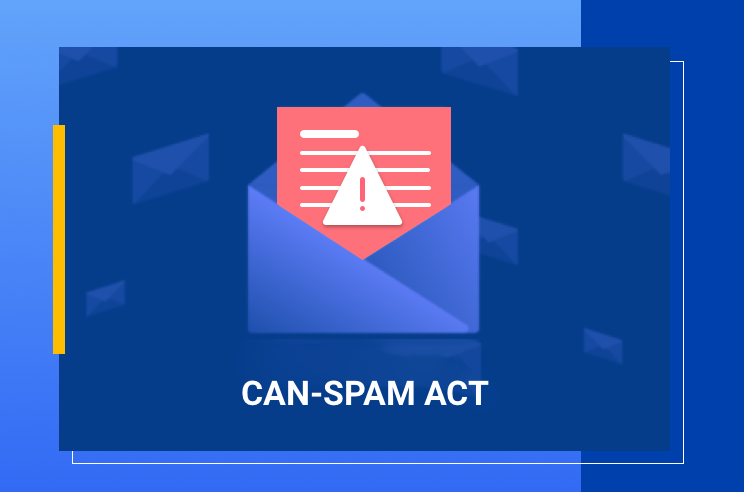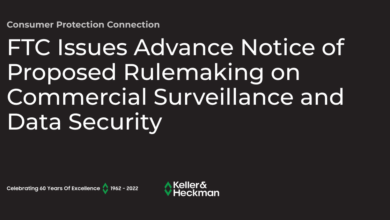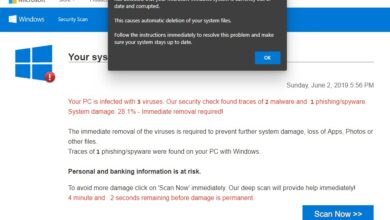California Law to Ban All Spam A Deep Dive
California law to ban all spam is a sweeping proposal with the potential to reshape online communication. This initiative aims to eliminate unsolicited commercial emails, but its implications extend far beyond simply blocking unwanted messages. The proposed legislation promises to dramatically alter business practices, consumer interactions, and the very fabric of digital commerce. This in-depth look explores the intricacies of this controversial law, delving into its historical context, potential impacts, and the technological considerations necessary for its implementation.
From the historical evolution of spam in California to the detailed framework for the ban, this comprehensive analysis explores the complexities of this proposed legislation. We’ll examine potential economic effects, discuss alternatives to a complete ban, and delve into the technical aspects of detecting and filtering unwanted messages. This is more than just a discussion about spam; it’s a look at the future of online interaction in California.
Background of Spam in California
Spam, a pervasive issue in California, has evolved from simple bulk emails to sophisticated phishing schemes. Its impact on individuals and businesses alike is significant, ranging from wasted time and resources to financial fraud and identity theft. This historical overview explores the evolution of spam, existing regulations, current concerns, various types, and potential consequences.California, a hub of technology and commerce, has been heavily impacted by the rise of unsolicited commercial emails.
The early days saw simple bulk advertising campaigns, often sent indiscriminately. As technology advanced, spam evolved into more sophisticated forms, targeting specific individuals and exploiting vulnerabilities in online systems.
Historical Overview of Spam in California
The initial wave of spam in California, like across the nation, was characterized by generic advertisements and promotions. Early internet users often received numerous emails promoting various products and services, many of which were irrelevant or misleading. This initial form of spam was less targeted, relying on sheer volume to reach potential customers.
Existing Laws and Regulations
California has a set of regulations addressing unsolicited commercial emails, largely mirroring federal laws. These laws aim to protect consumers from unwanted and potentially harmful commercial communications. California’s laws generally require commercial email senders to provide a clear method for unsubscribing and clearly identify the sender’s identity. Failure to comply can lead to penalties.
Current State of Spam-Related Issues and Concerns
Currently, spam in California continues to pose significant concerns. Sophisticated phishing campaigns, often disguised as legitimate communications, are becoming increasingly prevalent. These campaigns target personal information and financial accounts, leading to substantial financial losses for victims. Furthermore, spam often clogs email inboxes, reducing productivity and increasing the risk of missing critical messages.
Different Types of Spam Encountered in California
Spam in California encompasses a wide range of malicious and annoying communications. These include:
- Phishing scams: These sophisticated attempts to steal personal information, often using spoofed emails to trick individuals into revealing passwords, credit card details, or other sensitive data. These scams often mimic legitimate businesses or organizations to increase their credibility and trick users into responding.
- Malicious software distribution: Spam emails frequently serve as a vehicle for distributing malware, such as viruses, spyware, or ransomware. These malicious programs can compromise computer systems, steal data, or disrupt operations.
- Fake job offers: Job seekers in California are also susceptible to spam offers for positions that don’t exist. These scams target hopeful job applicants with fake job offers, asking for upfront payments or personal information in exchange for a supposed job.
- Lottery scams: These scams target individuals with fraudulent claims of winning large prizes or lottery awards. These scams often require the victim to make payments to “process” the winnings.
Potential Consequences of Current Spam Regulations
The consequences of current spam regulations in California vary depending on the severity of the violation. Businesses that violate these regulations can face fines and legal penalties. These penalties can range from minor infractions to substantial financial penalties, depending on the nature and extent of the violation.
Proposed Ban on All Spam
A complete ban on spam in California presents a significant opportunity to protect consumers and businesses from the detrimental effects of unsolicited commercial messages. This comprehensive approach, while ambitious, aims to create a more equitable and efficient digital environment for all. This framework seeks to address the current shortcomings of existing regulations and establish a clear and enforceable standard.This proposed ban goes beyond existing regulations by targeting all forms of unsolicited commercial communications, recognizing that the line between acceptable and unacceptable marketing practices has blurred in the digital age.
This robust approach will hopefully create a more predictable and less intrusive online experience for Californians.
Comprehensive Framework for a Complete Ban
This framework Artikels a complete ban on unsolicited commercial electronic messages in California, encompassing various digital channels. The key components include a broad definition of spam, detailed reporting mechanisms, and stringent penalties for violations.
- Definition of Spam: The definition of spam will encompass all unsolicited electronic messages with commercial intent, regardless of format (email, SMS, instant messaging, etc.). This includes messages designed to promote products or services, solicit donations, or engage in any form of direct marketing without prior express consent.
- Exceptions: Exceptions will be meticulously defined to avoid undue restrictions on legitimate communication. This includes transactional emails (e.g., order confirmations, shipping updates), messages from known contacts, and communications with express prior consent. Additionally, communications related to civic engagement, political campaigns, or non-profit fundraising will likely be excluded.
- Reporting Mechanisms: A robust reporting mechanism will be established for individuals to flag spam messages and initiate enforcement action. This will involve clear procedures for filing complaints, providing supporting evidence, and escalating cases to relevant authorities. A dedicated online portal or email address will likely facilitate the reporting process.
- Penalties for Violations: Penalties for violating the ban will be substantial enough to deter future instances. This may involve fines, injunctions, and potentially criminal charges in severe cases, depending on the nature and extent of the violation.
Scope of the Proposed Ban
The scope of the proposed ban will cover all electronic communication channels within California. This encompasses digital messaging platforms used by businesses and individuals. The ban will apply to both residents and businesses within California, and to businesses targeting Californian consumers.
- Application to Businesses: Businesses will be required to comply with the ban regardless of their location. This ensures that businesses targeting California consumers are held to the same standard, and prevent loopholes.
- Application to Individuals: Individuals engaging in widespread unsolicited commercial communication will also be subject to the ban. This is crucial to ensure a fair and consistent application of the law.
- Electronic Communication Channels: The ban will extend to all electronic communication channels, including email, SMS, instant messaging, social media direct messages, and other emerging forms of digital communication. The ban will encompass both traditional and newer forms of communication.
Comparison with Existing Laws in Other Jurisdictions
Comparing the proposed ban with existing laws in other jurisdictions will inform the design and implementation. Examining successful and unsuccessful approaches in other jurisdictions will ensure the effectiveness and feasibility of the proposed law.
| Jurisdiction | Key Features | Strengths | Weaknesses |
|---|---|---|---|
| Jurisdiction A | Specific focus on email spam | Effective in controlling email spam | Limited scope; doesn’t cover newer channels |
| Jurisdiction B | Broader definition of spam; includes social media | Addresses broader digital landscape | Potential for legal challenges regarding free speech |
| Jurisdiction C | Strict penalties for violations | Strong deterrent for spammers | Potential for disproportionate impact on smaller businesses |
Potential Legal Challenges
Several legal challenges to the proposed ban are anticipated, stemming from constitutional rights and potential impacts on free speech and commercial activity.
- Free Speech Concerns: Challenges related to freedom of speech are likely, arguing that the ban unduly restricts commercial communication. The proposed ban must carefully balance free speech rights with the need to protect consumers.
- Vagueness of the Definition: A vague definition of spam may lead to legal challenges and inconsistencies in enforcement. The ban must define spam in a clear and comprehensive manner.
- Impact on Legitimate Communication: The proposed ban needs to accommodate legitimate communication channels and avoid undue burden on businesses engaged in legitimate marketing efforts. Carefully designed exceptions and definitions are critical.
Potential Economic Effects
The economic effects of a complete spam ban will likely be mixed. While it will protect consumers from unwarranted communication, it could also negatively impact legitimate businesses that rely on marketing communications.
- Negative Impact on Businesses: Businesses may face difficulties reaching consumers, reducing their marketing effectiveness and potentially impacting revenue. The ban could negatively impact businesses relying on direct marketing.
- Positive Impact on Consumers: Consumers will benefit from a cleaner and less intrusive digital environment, leading to a more positive online experience. The ban will improve consumer privacy.
- Potential for Innovation: The ban may drive innovation in targeted marketing and communication practices, leading to more efficient and effective ways to reach consumers. The ban will encourage more ethical practices.
Impact on Businesses and Consumers

California’s proposed ban on all spam represents a significant shift in how businesses operate online. This sweeping legislation aims to protect consumers from unwanted and potentially harmful communications, but its effects on businesses and consumer interactions will undoubtedly be profound. The potential ramifications for marketing strategies, customer engagement, and communication methods need careful consideration.The ban will force businesses to reassess their strategies and prioritize legitimate communication channels.
This transition will impact everything from email marketing campaigns to social media interactions, ultimately shaping the future of online commerce in California.
Potential Effects on Businesses
Businesses operating in California will need to adapt their marketing strategies to comply with the new regulations. The ban on unsolicited commercial emails, messages, and other forms of electronic communication will require businesses to obtain explicit consent before contacting consumers. This shift will necessitate a profound change in their current practices, including a re-evaluation of existing email lists and a reevaluation of communication protocols.
- Reduced Reach and Potential Revenue Losses: Businesses heavily reliant on unsolicited email campaigns will experience a significant decrease in their reach and potential revenue. For example, a company promoting its new product through mass email blasts will likely see a drop in sales if it cannot obtain explicit consent from recipients.
- Increased Focus on Permission-Based Marketing: Businesses will need to focus on permission-based marketing methods, requiring customers to opt-in to receive communications. This approach prioritizes building relationships with customers who actively choose to engage with the business. A bookstore, for instance, might need to create an online signup form to allow customers to receive notifications about new releases and special offers.
- Higher Costs for Compliance: Implementing new systems for obtaining and verifying consent will involve additional costs. Businesses may need to invest in new software, training, and processes to ensure compliance. For instance, a software company might need to add a consent module to their subscription forms and update their customer relationship management systems.
Impact on Consumer Interactions
The ban’s impact on consumers will likely be a mix of convenience and increased control over their interactions with businesses. Consumers will have more control over the communications they receive.
- Enhanced Privacy and Control: Consumers will have more control over the types of communications they receive. This empowers them to avoid unwanted marketing materials and protect their privacy.
- Potential for Reduced Business Communication: Consumers might experience a decrease in the frequency and volume of communications from businesses, especially those they haven’t explicitly opted in to receive. For instance, a consumer might receive fewer promotional emails from stores after opting out of receiving these communications.
- More Personalized Experiences: Businesses will likely focus on providing more personalized communications to consumers who have actively opted in. This can lead to more relevant and engaging interactions. For example, an online retailer might send targeted recommendations based on past purchases and browsing history.
Alternative Communication Methods
Businesses can adopt alternative methods of communication that comply with the proposed ban. These methods will focus on building relationships with customers through direct and engaging interactions.
- Social Media Engagement: Businesses can leverage social media platforms to interact with consumers directly, fostering community and engagement. This involves creating valuable content, responding to comments, and running targeted ads. For instance, a fashion brand can use Instagram to showcase new collections and engage with customers through polls and Q&A sessions.
- Targeted Email Marketing: Businesses can use email marketing to communicate with customers who have explicitly opted in. The focus should be on providing valuable content and building relationships. This might involve newsletters, special offers, and product updates. A tech company, for example, might send a monthly newsletter with updates on new features and product improvements.
- Content Marketing: Businesses can create valuable content that attracts and engages customers, driving them to the company’s website or social media channels. This could include blog posts, articles, videos, and infographics. For instance, a financial services company can create informative articles about investing strategies to attract potential clients.
Implementation and Enforcement
Putting a ban on all spam in California requires a well-defined implementation plan, clear enforcement mechanisms, and a robust monitoring system. This ensures the law’s effectiveness and minimizes the potential for loopholes or abuse. The key is a multi-faceted approach that combines technological solutions with human oversight.The success of this anti-spam law hinges on its practical application. Effective implementation will need to consider the diverse nature of businesses operating in California and the varying levels of technical expertise among them.
Furthermore, the plan must be adaptable to evolving spam tactics, ensuring the law remains relevant in the face of emerging threats.
Implementation Timeline
The implementation process should unfold in a phased manner to allow businesses to adapt. A gradual rollout will mitigate potential disruption and provide ample time for compliance.
- Phase 1 (6 months): Public awareness campaigns, training sessions for businesses, and establishment of a dedicated spam reporting mechanism. This phase focuses on educating stakeholders about the new law and providing them with the resources needed to comply.
- Phase 2 (12 months): Verification of compliance for businesses operating in California. This includes targeted audits and reviews of existing practices to ensure they adhere to the new regulations. This phase allows for remediation and adjustment for companies still not compliant.
- Phase 3 (18 months): Full enforcement of the ban, including penalties for violations. This final phase marks the point where the ban is fully active and enforceable, ensuring the effective reduction of spam across the state.
Enforcement Methods
Enforcement of the ban requires a multi-pronged approach combining proactive monitoring and reactive measures.
- Proactive Monitoring: Real-time monitoring of email traffic to identify spam activity. Sophisticated algorithms can analyze email headers, content, and sender information to identify and flag suspicious patterns. This would involve a combination of automated tools and human oversight to catch more nuanced spam.
- Reactive Measures: Responding to complaints and reports of spam. This includes investigating reported violations and taking appropriate action. A dedicated team would review reports and take action based on the severity of the violation.
- Penalties for Violations: Penalties should be proportionate to the severity of the violation. These could range from warnings and corrective actions for minor violations to fines and legal repercussions for egregious or repeated offenses. A graduated penalty structure would be advisable, increasing in severity with the number of violations.
Roles and Responsibilities, California law to ban all spam
Effective enforcement requires a clear delineation of roles and responsibilities among various entities.
| Entity | Role |
|---|---|
| California Department of Consumer Affairs | Oversight and coordination of enforcement efforts. This department will oversee the process and ensure that the enforcement is carried out consistently. |
| California Attorney General | Prosecution of severe violations and legal actions. They will handle the more serious cases, ensuring the law is upheld and enforced to the fullest extent. |
| Spam Reporting Center | Receiving complaints, investigating reported violations, and providing support to businesses and consumers. This center acts as the first point of contact for those reporting spam issues. |
Challenges in Monitoring and Enforcement
The sheer volume of email traffic and the ever-evolving nature of spam pose significant challenges to monitoring and enforcement.
- Evolving Spam Tactics: Spammers continuously develop new methods to circumvent filters and regulations. This requires constant adaptation of monitoring techniques to stay ahead of the curve.
- International Spam: Spam originating from outside California requires international cooperation to effectively address the issue. This will involve coordination with other jurisdictions and countries.
- Defining Spam: The definition of “spam” may need to be refined over time to address new forms of unwanted communication. Regular review and updates to the definition of spam are critical to maintaining effectiveness.
Technological Considerations
Spam, a persistent digital nuisance, requires sophisticated technical solutions for effective detection and filtering. The sheer volume and ever-evolving nature of spam necessitate a multifaceted approach, encompassing various filtering technologies and methodologies. This section delves into the technical aspects of combating spam, including the role of artificial intelligence in the fight.
Spam Detection Techniques
A range of techniques are employed to identify and filter spam. These methods vary in their complexity and effectiveness, each with strengths and weaknesses. Understanding these techniques is crucial for developing an effective spam-filtering strategy.
- Content-Based Filtering: This approach analyzes the content of an email for s, phrases, or patterns associated with spam. Examples include looking for words like “free,” “prize,” or “urgent,” or detecting specific grammatical errors or unusual sentence structures. While simple to implement, content-based filters can be easily circumvented by spammers who adapt their techniques to avoid detection. The effectiveness of this method relies heavily on the quality and comprehensiveness of the lists used.
- Header-Based Filtering: This method scrutinizes the header information of an email, looking for inconsistencies or suspicious patterns. Header information includes sender details, email routing, and other metadata. This approach is more reliable than content-based filtering, as spammers often struggle to manipulate headers authentically. However, headers can be forged, and this technique’s effectiveness is limited to the accuracy of the data in the header.
- Reputation-Based Filtering: This approach leverages databases of known spam senders and domains. Emails originating from these blacklisted entities are automatically flagged and filtered. The accuracy of these lists is critical; outdated or inaccurate lists can lead to legitimate emails being blocked. These lists are frequently updated to incorporate new spammers and domains.
- Bayesian Filtering: This probabilistic method analyzes the content of emails and learns to distinguish between spam and legitimate emails based on the frequency of words and phrases. The more emails a user marks as spam, the more accurate the filter becomes. This method is relatively effective at identifying spam, but can occasionally flag legitimate emails containing similar terms.
Filtering Technologies
Numerous filtering technologies are employed to detect and block spam. The choice of technology often depends on the specific needs and resources of the organization or individual.
- Email Servers: Modern email servers incorporate sophisticated spam filters as part of their core functionality. These filters apply various techniques to assess incoming emails for suspicious characteristics. The efficacy of these filters depends on the specific algorithms and data sources used.
- Specialized Anti-Spam Software: Dedicated anti-spam software often provides more advanced features, such as comprehensive filtering capabilities and integration with other security tools. These tools can be customized to meet specific requirements.
- Cloud-Based Spam Filtering Services: Cloud-based providers offer scalable and managed spam filtering solutions. These services often leverage sophisticated algorithms and large datasets to identify and block spam, providing a cost-effective option for organizations of all sizes.
Artificial Intelligence in Spam Filtering
Artificial intelligence (AI) is playing an increasingly important role in identifying and blocking spam. Machine learning algorithms can analyze vast amounts of data to identify patterns and anomalies associated with spam, improving the accuracy and efficiency of spam filters.
- Machine Learning Algorithms: Machine learning algorithms can identify spam with high accuracy by learning from past data. The more data they process, the more effective they become. Examples include support vector machines, naive Bayes classifiers, and neural networks. These algorithms learn to distinguish between spam and legitimate emails based on characteristics like sender information, content, and recipient behaviour.
- Deep Learning: Deep learning models, a more advanced form of machine learning, can analyze emails at a deeper level. They can identify complex patterns and subtle nuances associated with spam that traditional methods might miss. Deep learning algorithms can be trained on massive datasets, further enhancing their effectiveness.
Effectiveness Comparison
| Technique | Description | Effectiveness | Limitations |
|---|---|---|---|
| Content-Based | Analyzes email content for s. | Moderate | Easily bypassed by spammers. |
| Header-Based | Examines email headers for inconsistencies. | High | Headers can be forged. |
| Reputation-Based | Uses blacklists of known spam senders. | Good | Lists may be outdated or inaccurate. |
| Bayesian Filtering | Probabilistic analysis of email content. | Good | May misclassify legitimate emails. |
Public Perception and Awareness

Public acceptance of a complete spam ban in California hinges on a clear understanding of its purpose and impact. A well-informed populace is more likely to support such a law, viewing it as a solution rather than a restriction. Misconceptions and anxieties need to be addressed proactively to ensure smooth implementation.
Public Understanding and Acceptance
Public understanding of spam and its detrimental effects is crucial for a successful ban. Many consumers are already frustrated by unwanted emails and text messages, often feeling targeted and harassed. A comprehensive understanding of the law’s benefits, such as reduced annoyance and potential financial savings, can increase public support. A complete ban, while seemingly harsh, can be framed as a necessary step towards a cleaner digital environment.
Potential Concerns and Challenges
Educating the public about the nuances of the ban is paramount. Concerns about legitimate marketing emails or communications with businesses could arise. It is vital to clearly define what constitutes spam, ensuring that legitimate business communications are not mistakenly flagged as unwanted. This requires clear and accessible explanations for consumers and businesses alike.
Public Awareness Strategies
Several strategies can foster public awareness and acceptance of the ban. Educational campaigns through social media, public service announcements, and partnerships with consumer organizations can effectively reach a broad audience. These campaigns should emphasize the ban’s benefits, such as a cleaner inbox and protection from scams. Examples include providing FAQs, infographics, and simple explanations of the ban’s details.
Furthermore, workshops and webinars can provide a platform for direct engagement with the public, addressing their concerns and questions in real-time.
Methods for Encouraging Public Participation
Encouraging public participation in reporting spam is vital for the ban’s success. Creating a user-friendly reporting mechanism, accessible through various digital channels, will be essential. This might include a dedicated website or app. Incentives, such as small rewards for reported spam, can encourage active participation. Public awareness campaigns can also highlight the role individuals play in maintaining a spam-free environment.
California’s proposed ban on all spam is a fascinating development, but it’s important to consider how such laws might affect other areas of technology. For example, understanding the malicious nature of worms like the SoBig.E, detailed in profile of the superworm SoBig E exposed , highlights the need for robust security measures. Ultimately, California’s spam ban might be a necessary step in safeguarding online communication, but the complexity of modern cyber threats demands a comprehensive approach.
Clear guidelines for what constitutes spam and how to report it will reduce confusion and encourage proactive engagement.
Comparative Public Attitudes Toward Spam
| State | Public Attitude | Reason |
|---|---|---|
| California | Likely to be supportive | High awareness of online issues and strong consumer protections. |
| Texas | Mixed | A blend of concerns about privacy and business impacts. |
| New York | Generally supportive | Strong focus on consumer rights and digital literacy. |
Note: This table provides a hypothetical comparison. Actual public attitudes would need to be measured through surveys and research specific to each state. These are general observations based on likely trends.
International Implications
California’s proposed ban on all spam presents a fascinating case study in the global challenge of regulating digital communication. While seemingly a domestic issue, the potential for cross-border effects and conflicts with international regulations is significant. This analysis delves into the complexities of a Californian law impacting international commerce and communication.The proposed California ban, while focusing on the state’s borders, will inevitably reverberate through global digital networks.
The very nature of the internet, characterized by its borderless structure, makes it challenging to contain any regulatory action within a single jurisdiction. This introduces the potential for legal and regulatory friction with other nations.
Potential Cross-Border Effects
The Californian ban’s impact on international commerce is multi-faceted. Email marketing, a crucial aspect of many businesses operating across borders, could be significantly affected. International companies reliant on targeted advertising and promotional emails to customers in California will need to adapt their strategies. This could include adjusting their communication strategies or, in the worst-case scenario, ceasing operations in California altogether.
International Legal and Regulatory Conflicts
The proposed ban’s compliance with international trade agreements and existing communications regulations is crucial. Potential conflicts may arise with countries that have different approaches to spam legislation or those with differing standards of acceptable communication. A clash of regulations could create significant legal uncertainties and complications for companies operating internationally.
Impact on International Commerce and Communication
International commerce heavily relies on electronic communication. A California-wide ban on spam could significantly impact global e-commerce and digital communication platforms. International business collaborations and transactions often rely on email communications, and this ban might lead to substantial disruptions. For example, businesses sending newsletters, promotional materials, or crucial transactional emails to Californian customers may face legal hurdles and financial losses.
Comparison to Similar Initiatives in Other Countries
Various countries have attempted to address spam issues through legislation. Some countries have enacted comprehensive spam laws while others have taken a more limited approach. The key differences in approach will shape the effectiveness and international acceptance of California’s proposed ban.
Examples of Similar Bans in Other Jurisdictions
The EU’s spam laws, often considered a strong model, offer insights into how other jurisdictions have dealt with this issue. These regulations Artikel acceptable practices for email marketing and penalties for violations. Understanding how these regulations have been enforced in other jurisdictions will provide a valuable comparison to California’s proposed approach. The UK’s approach to online advertising and data privacy also offers relevant examples.
Technological Considerations for International Application
Technological challenges are paramount in enforcing a ban on spam that crosses borders. Identifying spam originating from other countries requires sophisticated filters and technical solutions. Spammers can easily circumvent these measures, highlighting the need for international cooperation in developing robust anti-spam technologies. For instance, collaborative development and sharing of anti-spam filter algorithms could significantly enhance the effectiveness of the Californian ban.
Alternatives to a Complete Ban
A complete ban on all spam in California, while appearing as a decisive solution, might have unforeseen consequences. This approach, though seemingly straightforward, could stifle legitimate marketing communications and potentially harm small businesses reliant on targeted outreach. Exploring alternative, less restrictive measures is crucial to finding a balance between consumer protection and business viability.
Filtering and Filtering Mechanisms
Implementing sophisticated filtering mechanisms is a viable alternative to a complete ban. These systems can effectively identify and categorize emails as spam based on predefined criteria, thereby reducing the volume of unwanted messages reaching inboxes. This approach allows for a more targeted and nuanced approach to spam control, rather than a blanket prohibition.
- Content Analysis: Spam filters can analyze the content of emails for s, phrases, or suspicious language patterns indicative of spam. This can include checking for the presence of misleading subject lines or phrases designed to trick recipients.
- Sender Reputation: Maintaining a database of sender reputations, based on previous spam reports and email behavior, allows filters to flag messages from known spammers more readily. This proactive approach learns from past mistakes and identifies new spammers effectively.
- Header Analysis: Examining email headers can reveal red flags such as forged sender addresses or unusual routing information. This helps to identify emails that have been spoofed or tampered with in an attempt to conceal their origin.
Regulations and Guidelines
Instead of a total ban, implementing clear regulations and guidelines for email marketing practices could provide a framework for acceptable behavior. This approach would set standards for businesses and consumers, offering a more controlled and predictable environment.
California’s proposed ban on all spam is a significant step, but the underlying vulnerabilities in databases like those exploited by db2 holes offer root access could still leave systems open to attack. While the spam ban aims to protect users from unwanted messages, a robust security posture encompassing database patching and proactive security measures is also crucial.
This proactive approach is key to the effectiveness of any anti-spam law in California and beyond.
- Disclosure Requirements: Mandating disclosure of the sender’s identity and the purpose of the email could help consumers make informed decisions about whether to open and engage with the message. This transparency would minimize the element of surprise and deception often associated with spam.
- Opt-Out Mechanisms: Strengthening opt-out procedures for email subscriptions would empower consumers to easily unsubscribe from unwanted communications. Clear and prominent opt-out links would enhance consumer control and limit the flow of unsolicited emails.
- Penalties for Violations: Implementing penalties for businesses that consistently violate email marketing guidelines would create a deterrent and encourage compliance. This would act as a disincentive for sending excessive or deceptive emails.
International Collaboration
Considering the global nature of email communication, international cooperation in developing and enforcing anti-spam standards could greatly enhance the effectiveness of any alternative strategy. Sharing best practices and data on spam-related activities across borders could lead to a more holistic approach.
California’s new law to ban all spam is a big deal, potentially changing how we interact online. While that’s happening, companies like Airgo are pushing the boundaries of wireless technology. Their recent claim of a next-gen wireless LAN in their chipset ( airgo claims next gen wireless lan in chipset ) could dramatically impact future internet usage, potentially even influencing how we combat spam in the future.
This California law to ban spam will still be crucial, though, to keep online spaces clean and user-friendly.
- Data Sharing: Collaboration between jurisdictions to share data on spammers and their activities could create a more comprehensive understanding of spam networks and patterns. This cross-border data exchange would allow for a global approach to tackling the problem.
- Harmonized Standards: Developing and enforcing harmonized standards for email marketing practices could create a consistent framework for email communication globally. This uniformity would make it easier for businesses to comply with international regulations and reduce the burden of multiple compliance requirements.
- Joint Enforcement: International cooperation on enforcement mechanisms could allow for coordinated action against large-scale spam operations. This combined approach would target the root causes of spam more effectively.
Comparison of Effectiveness
The effectiveness of different alternatives will vary depending on the specific implementation and the scale of the problem. A combination of filtering mechanisms, clear regulations, and international collaboration would likely provide the most comprehensive and effective solution.
| Alternative | Advantages | Disadvantages |
|---|---|---|
| Filtering Mechanisms | High efficiency in blocking spam, minimal disruption to legitimate communications | Requires significant technical resources and constant updates, potential for false positives |
| Regulations and Guidelines | Promotes transparency and consumer control, provides a framework for businesses | Requires enforcement and monitoring, may not be sufficient to address sophisticated spam tactics |
| International Collaboration | Creates a global approach to combat spam, leverages collective knowledge and resources | Requires significant coordination and agreement among diverse jurisdictions, potential for differing standards |
Structure for a Detailed Report on California’s Proposed Spam Ban
This report Artikels the structure for a comprehensive analysis of California’s proposed ban on all spam. The proposed legislation, aiming to protect consumers from unwanted electronic messages, presents complex implications for businesses, consumers, and the broader digital landscape. This structure will provide a clear and logical flow for understanding the potential impacts and considerations.
Report Structure and Table of Contents
This section details the organization of the report, ensuring a logical progression of information.
- Executive Summary: A concise overview of the report’s key findings and recommendations. This provides a quick understanding of the report’s content for busy readers and decision-makers.
- Introduction: Background on spam in California, the context of the proposed ban, and its overall aims. This section will provide historical context, and a clear definition of the scope of the proposed legislation.
- Detailed Analysis of the Proposed Ban: A comprehensive examination of the proposed ban, addressing specific aspects of the legislation, including the definition of spam, exemptions, and enforcement mechanisms.
- Definition of Spam: A clear and concise description of the types of electronic messages that would be considered spam under the proposed law. This includes examples of what would and would not be considered spam.
- Exemptions from the Ban: Identifies the types of electronic communications that would be excluded from the ban, such as transactional emails, marketing communications with prior consent, and other specific instances.
- Enforcement Mechanisms: Discusses how the law will be enforced, including penalties for violations and the roles of different agencies. This section will also include a discussion of potential challenges in enforcement.
- Impact on Businesses: Assessment of the potential effects on different types of businesses, considering both large and small enterprises. This will include an analysis of the financial impact, operational changes, and potential legal challenges for businesses.
- Financial Impact on Businesses: Assessment of the direct and indirect costs for businesses adapting to the new legislation. Examples and data will be included to illustrate the potential financial implications for businesses of different sizes.
- Operational Changes for Businesses: Discussion of adjustments businesses might need to make in their marketing strategies, customer communication protocols, and data management practices.
- Impact on Consumers: Analysis of the effects on consumers, including the potential benefits and drawbacks of the ban. This section will also consider the consumer’s perspective of the proposed law, and how it might affect their experience with online interactions.
- Potential Benefits for Consumers: Detailed discussion of the benefits that consumers may receive from the ban, such as reduced unwanted email and improved online experience.
- Potential Drawbacks for Consumers: Discussion of the potential downsides for consumers, including challenges in accessing important information and communications.
- Technological Considerations: Examination of the technological challenges and opportunities related to the implementation of the ban. This includes a discussion of filters, detection mechanisms, and the ability to comply with the legislation.
- Public Perception and Awareness: Analysis of the public’s understanding and acceptance of the proposed ban. This section will explore how public awareness can influence the success of the legislation.
- International Implications: Assessment of the potential impact of the ban on cross-border communications and trade. This includes a discussion of potential conflicts with international regulations.
- Alternatives to a Complete Ban: Evaluation of alternative approaches to address spam issues, including self-regulatory measures and industry standards. This section will explore other potential solutions, and evaluate the pros and cons of each.
- Implementation and Enforcement Plan: A detailed plan for implementing the ban, including a timeline, budget, and resource allocation. This section will address the feasibility and practicality of implementing the ban, and how to manage the implementation process effectively.
- Conclusion: Summary of the report’s key findings and recommendations.
Example: Definition of Spam
A clear definition of spam is crucial for effective implementation of the proposed ban. The definition should precisely Artikel the types of electronic messages considered unsolicited and unwanted, avoiding ambiguity. This will ensure that the ban effectively targets spam while minimizing potential issues for legitimate communication.
“Spam is defined as any electronic message sent without the explicit consent of the recipient, or in violation of any applicable law regarding unsolicited commercial communications.”
This example illustrates the need for a clear definition to prevent legitimate communications from being misclassified as spam.
Last Recap: California Law To Ban All Spam
In conclusion, the California law to ban all spam presents a significant challenge and opportunity. While a complete ban could effectively curb unwanted commercial emails, it also raises complex questions about free speech, economic impacts, and technological feasibility. The proposed legislation requires careful consideration of its potential consequences and alternative approaches, ensuring a balanced solution that protects consumers while fostering innovation in the digital marketplace.
Ultimately, the success of this law hinges on careful planning, public awareness, and a willingness to adapt to the changing landscape of online communication.







